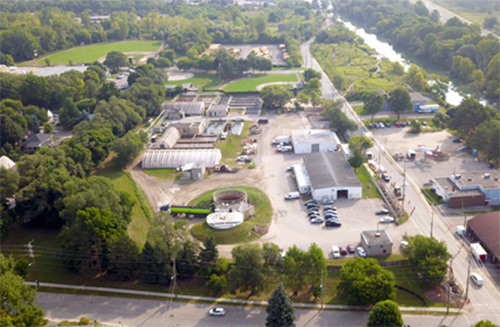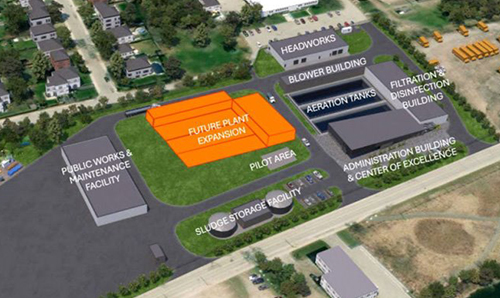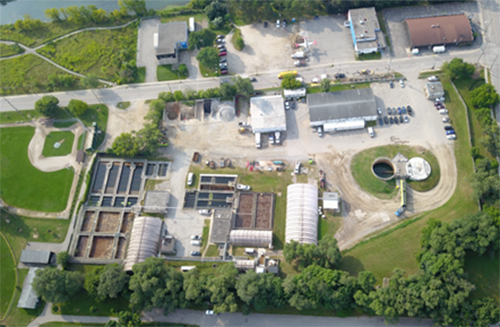Dundas Wastewater Treatment Plant Upgrades

For more information:
Email [email protected]
The Dundas Wastewater Treatment Plant, located at 135 King Street East in Dundas, has been serving the community for more than 100 years. When it first opened in 1919, the plant provided essential wastewater treatment, meeting the standards of the day. Since then, it has continually evolved through several upgrades to improve performance and serve a growing population.
Current Operations
The facility operates with two treatment lines, one constructed in 1962, and the other in 1977, with tertiary sand filtration added in 1988. It is a conventional activated sludge plant1 with tertiary treatment, designed to remove solids, organic matter, and nutrients. The resulting treated effluent (clean, treated water) is then safely released to the Desjardin Canal. During high flows, excess wastewater is diverted to the Woodward Avenue Wastewater Treatment Plant.
Although the Dundas Wastewater Treatment Plant produces sludge, this material is trucked to the City’s larger Woodward Avenue Wastewater Treatment Plant for further treatment. Learn more about Hamilton’s wastewater treatment process.
Why Upgrades Are Needed
While the plant has had many improvements over the decades, much of its equipment and infrastructure is now aging and reaching the end of its useful life. The City’s most recent Waterworks Asset Management Plan (2022) identified the facility as being in “Poor” condition, highlighting the need for major upgrades to ensure reliable service into the future. The Dundas Wastewater Treatment Plant is being completely replaced with a modern facility that will incorporate advanced wastewater treatment technologies, ensuring safe, reliable service for years to come.
Several factors highlight why upgrades are necessary, ranging from the state of the existing infrastructure to environmental considerations and opportunities to use new technology.
Aging Infrastructure
The condition of the Dundas Wastewater Treatment Plant is rated as Poor due to significant deterioration as well as major parts of the plant processes and structures reaching the end of their normal service life.
Environmental Impacts
While the Dundas Wastewater Treatment Plant continues to meet its effluent discharge limits set by the Ministry of the Environment, Conservation and Parks, the plant discharges into Cootes Paradise, an environmentally protected area. To ensure long-term protection of this important water body and its ecosystems, the City is taking proactive steps to improve effluent quality and reduce potential impacts to Hamilton Harbour, a designated area of concern under the Great Lakes Water Quality Agreement.
Improved Treatment Technology
The plant will be upgraded to a membrane bioreactor (MBR) system, a modern treatment technology that removes more phosphorus and produces cleaner effluent water. This will help reduce algae growth in Cootes Paradise and Hamilton Harbour, improve water clarity, and support healthier fish and wildlife habitats. For residents, this means cleaner local waterways, a healthier environment, and continued protection of this valued natural area.
What's Changing
The Dundas Wastewater Treatment Plant will modernize its operations with a brand new facility that produces cleaner effluent water while protecting the environment. Key features of the new facility include:
These upgrades were approved by Hamilton City Council as part of the Dundas Wastewater Treatment Plant Upgrades (PW24059) Council Report
Progress & Consultation
Subscribe to Project Status Updates
Keep up to date on the Dundas Wastewater Treatment Plant Upgrades project. Subscribe to receive email updates about the project, including key milestones and upcoming public information sessions. Updates will be shared twice a year until construction begins, with additional notices for important developments.



